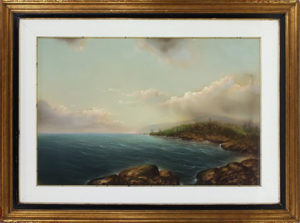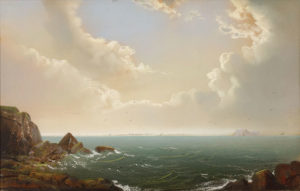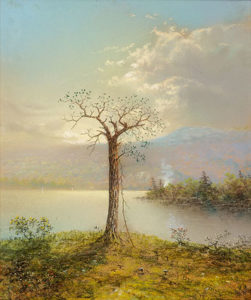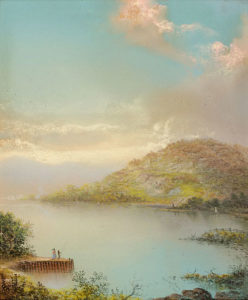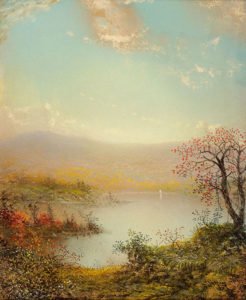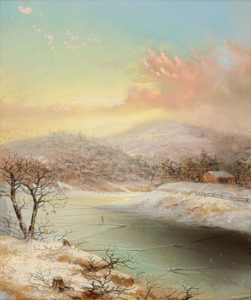Paintings in Inventory (Click on an image for a larger view)
George Douglas Brewerton received lessons in art from Prof. Robert W. Weir at West Point where his father was Superintendent. In 1847 he was detailed to San Francisco as an officer in the Stevenson Regiment. Stationed for a while at the Presidio, Brewerton would retain fond memories of his time in San Francisco and paint views of the California coast all through his career as an artist. In 1848 he underwent many adventures in Western deserts and mountains as an aide to Kit Carson, who was dispatched to cross the country with news of the California Gold Rush. Brewerton painted several important oil paintings depicting scenes in the Rockies that were bought by important Eastern collectors. Brewerton was a writer as well as an artist, and his accounts of his explorations with Carson were published as a series of articles in Harper’s Weekly. He pursued a somewhat checkered career as a preacher, lawyer, artist and poet, dividing his time between Newport, Rhode Island, where his family was from, and Brooklyn. Abandoning oils, Brewerton developed a unique landscape style painting in pastels, a medium that had been popular for portraits in the eighteenth century. He was the only painter working in the Hudson River school style to use pastel—which would became popular again in the 1880s and 1890s in the hands of plein-air painters like William Merritt Chase. After two turbulent marriages, Brewerton visited San Francisco in 1887 and became a member of the Society of California Pioneers. He lived in Tacoma, Washington, with his third wife, Sarah, from 1888 until 1892, when he returned to Brooklyn. In his pastel landscapes, Brewerton was able to create beautiful effects of light and atmosphere in soft tones. His foregrounds, often dotted with flowers, set off skies of swirling clouds that project an ethereal spirituality underlying natural appearances. Unjustly neglected all through the twentieth century, Brewerton deserves to be better known, as the rediscovery of nineteenth-century American art continues.
Available for sale individually:
-
George Douglas Brewerton (1827-1901)
“Headlands of the Pacific”
24” x 36”, signed, pastel, original frame.
Sale price: $2,500.
To be sold as a pair:
To be sold as a set of four:
